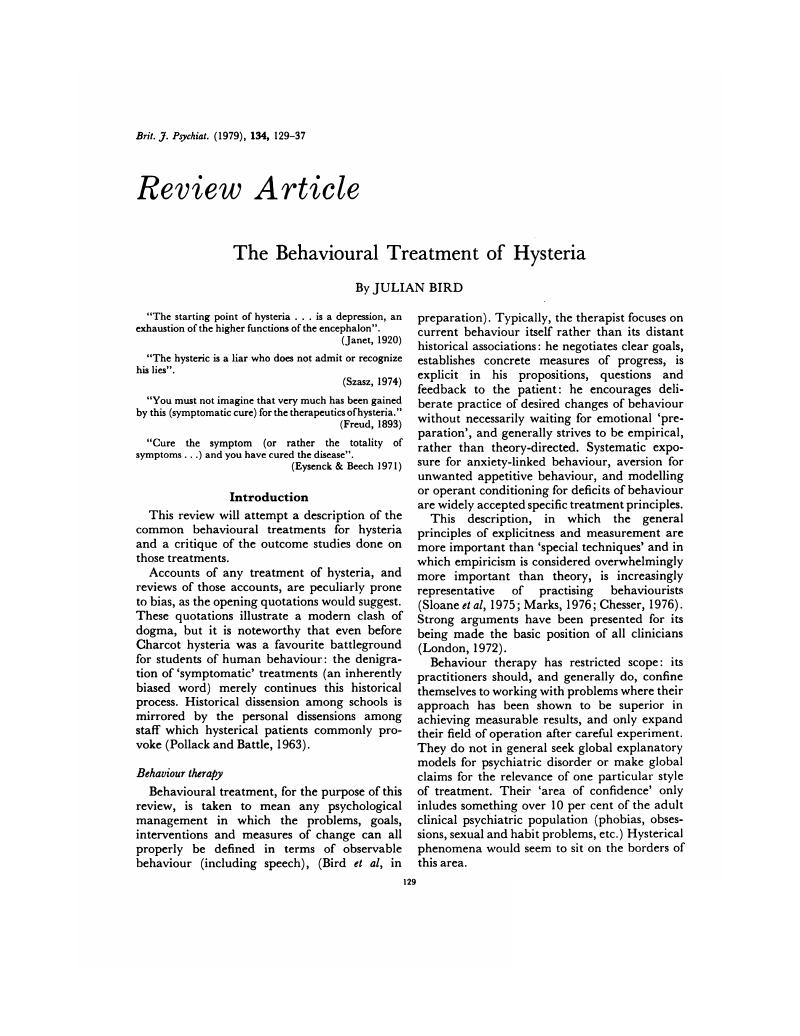Crossref Citations
This article has been cited by the following publications. This list is generated based on data provided by Crossref.
Fukuda, Kazuhiko
and
Matsue, Yoshihiko
1980.
The Changing Style of Symptomatology of Hysteria.
Psychiatry and Clinical Neurosciences,
Vol. 34,
Issue. 4,
p.
407.
MACFIE, CRAIGIE
1980.
PSYCHIATRY.
Medical Journal of Australia,
Vol. 1,
Issue. 9,
p.
405.
Goodyer, Ian
1981.
HYSTERICAL CONVERSION REACTIONS IN CHILDHOOD.
Journal of Child Psychology and Psychiatry,
Vol. 22,
Issue. 2,
p.
179.
Gardner, David L.
and
Goldberg, Richard L.
1983.
Psychogenic Seizures and Loss.
The International Journal of Psychiatry in Medicine,
Vol. 12,
Issue. 2,
p.
121.
Trivedi, J. K.
and
Gupta, A. K.
1984.
Childhood hysteria.
The Indian Journal of Pediatrics,
Vol. 51,
Issue. 4,
p.
459.
Andrews, John D. W.
1984.
Psychotherapy with the Hysterical Personality: An Interpersonal Approach.
Psychiatry,
Vol. 47,
Issue. 3,
p.
211.
Brooksbank, Donald J.
1984.
Management of conversion reaction in five adolescent girls.
Journal of Adolescence,
Vol. 7,
Issue. 4,
p.
359.
Hurwitz, T.A.
1988.
Narcosuggestion in Chronic Conversion Symptoms Using Combined Intravenous Amobarbital and Methylphenidate.
The Canadian Journal of Psychiatry,
Vol. 33,
Issue. 2,
p.
147.
Fochtmann, Laura J.
1995.
Intractable Sneezing as a Conversion Symptom.
Psychosomatics,
Vol. 36,
Issue. 2,
p.
103.
Mai, François M.
1995.
“Hysteria” in Clinical Neurology.
Canadian Journal of Neurological Sciences / Journal Canadien des Sciences Neurologiques,
Vol. 22,
Issue. 2,
p.
101.
Moene, Franny
and
Hoogduin, Kees
1996.
Klinische behandeling van zestien patiënten met een motorische conversiestoornis; een ‘pilot–study’.
Dth,
Vol. 16,
Issue. 3,
p.
120.
Speed, John
1996.
Behavioral management of conversion disorder: Retrospective study.
Archives of Physical Medicine and Rehabilitation,
Vol. 77,
Issue. 2,
p.
147.
Moene, Franny C.
Hoogduin, Kees A.L.
and
Dyck, Richard Van
1998.
The inpatient treatment of patients suffering from (motor) conversion symptoms: A description of eight cases.
International Journal of Clinical and Experimental Hypnosis,
Vol. 46,
Issue. 2,
p.
171.
Heruti, RJ
Levy, A
Adunski, A
and
Ohry, A
2002.
Conversion motor paralysis disorder: overview and rehabilitation model.
Spinal Cord,
Vol. 40,
Issue. 7,
p.
327.
Shapiro, Allan P.
and
Teasell, Robert W.
2004.
Behavioural interventions in the rehabilitation of acute v. chronic non-organic (conversion/factitious) motor disorders.
British Journal of Psychiatry,
Vol. 185,
Issue. 2,
p.
140.




eLetters
No eLetters have been published for this article.